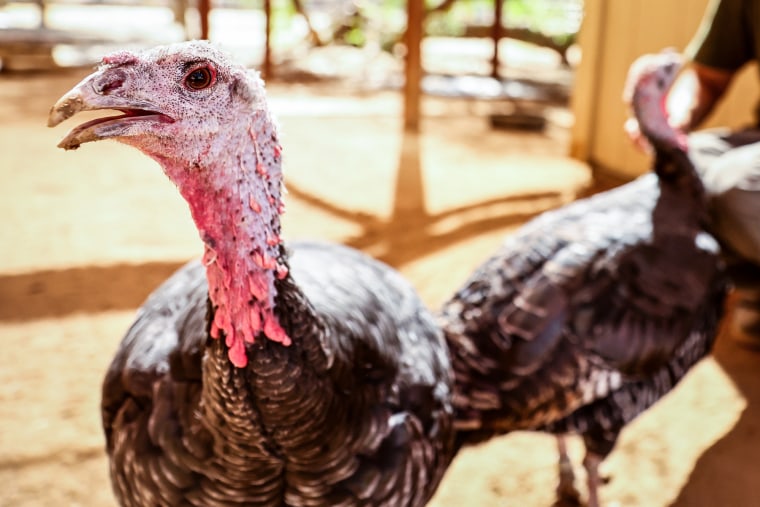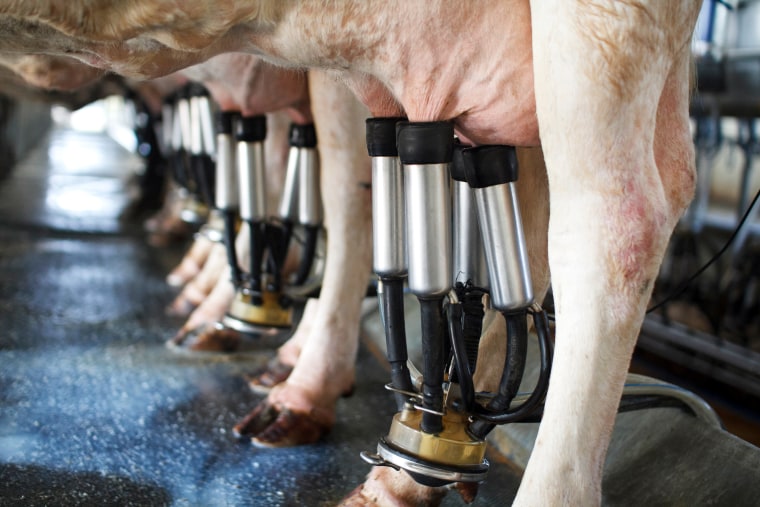The Food and Drug Administration revealed last week that it had found traces of the bird flu virus in 20% of a nationally representative sample of commercially sold pasteurized milk. That announcement is the latest evidence that we are witnessing the uncontrolled spread of the highly pathogenic H5N1 disease. This month, bird flu, which has been found on dairy farms across nine states, was detected in a dairy worker in Texas.
This month, bird flu, which has been found on dairy farms across nine states, was detected in a dairy worker in Texas.
Dr. Barb Petersen, a dairy veterinarian in Amarillo who’d been caring for cows sick with the H5N1 strain of the bird flu in March, told NBC News that at the same time, multiple dairy workers, and not just those who’d come in contact with sick cows, got sick.
Peterson said, “People had some classic flu-like symptoms, including high fever, sweating at night, chills, lower back pain.” In addition to symptoms such as vomiting and diarrhea, Petersen said, “they also tended to have pretty severe conjunctivitis and swelling of their eyelids.” Despite these symptoms, those workers weren’t tested for H5N1.
Those reported ailments, a worker’s testing positive for bird flu infection and the more recent discovery of virus fragments in pasteurized milk being sold to consumers should together serve as our wake-up call that bird flu is evolving. Consumers and government agencies should be just as concerned as virologists are. But despite evidence showing the presence of bird flu in our food system, the FDA says we shouldn’t be worried.
In an April 23 statement, the FDA, which says it has detected pieces of the virus but not live infectious virus in milk being sold, said, “To date, we have seen nothing that would change our assessment that the commercial milk supply is safe.”
However, as agribusiness and government officials downplay concerns, the World Health Organization is warning of a mutating virus with an “extraordinarily high” mortality rate seen in humans, and a recent study concluded that influenza is likely to spur our next pandemic. We must heed the warnings of experts and learn from the Covid-19 pandemic before it’s too late.
Since 2022, bird flu has claimed the lives of over 100 million farmed birds in North America. Not only has it been documented in other domesticated animals — such as cows, dogs and cats— but it’s also spreading in the environment and infecting wild mammals, including sea lions, foxes and dolphins.
Too often, agribusiness and government agencies like the U.S. Department of Agriculture have ignored warning signs and withheld valuable data. Until recently, the USDA had failed to submit bird flu sequence data to the Global Initiative on Sharing All Influenza Data. The lack of transparency and due diligence in these and other areas could drive us straight into the next global public health emergency.
The media, too, has failed to adequately address the dangers of mutating diseases. Headlines have focused on the rising cost of eggs and the struggles of farmers — and, most recently, there have been headlines focused on the government’s assertion that cow’s milk is safe. We need reporting that helps us better understand the myriad risks of our unhealthy factory farm food system.
One case of bird flu means a whole flock of poultry is killed, and farmers are compensated for their loss, per a 2018 farm bill, getting 75% of the value of the animals culled. According to a January report from the nonprofit Food & Environment Reporting Network, since 2022, the USDA has dispensed $715 million to “producers, growers, and integrators in indemnities for depopulated birds and eggs” and $183 million “to kill and dispose of flocks and for virus elimination work.”
All the while, little is done to address the root cause of the problem, the fact that factory farm conditions breed disease.
Since 2022, the USDA has dispensed $715 million to “producers, growers, and integrators in indemnities for depopulated birds and eggs” and $183 million “to kill and dispose of flocks and for virus elimination work.”
The Biden administration has ordered that lactating cows be tested before being transported across state lines, and the USDA announced Monday that it’s testing samples of ground beef in states where the bird flu has been found in dairy cows. These are positive steps, but so much more needs to be done, especially since dairy producers have hesitated to test their herds voluntarily and because irresponsible and risky practices like feeding poultry manure to cattle continue. It’s sobering to note that 90% of U.S. dairy herds have at least one animal infected with bovine leukemia virus, and nearly 70% have Johne’s disease, which may be linked to Crohn’s disease in humans. Animal agriculture has also been responsible for other outbreaks, like the 2009-10 swine flu pandemic, which caused over 284,000 human fatalities in about 75 countries.

Rick Bright, an immunologist and the former director of the Biomedical Advanced Research and Development Authority under President Joe Biden, told The New York Times that ignoring the dangers of bird flu is risky. “There’s a fine line between one person and 10 people with H5N1. By the time we’ve detected 10, it’s probably too late” to stop the spread of the virus. If the industry isn’t going to be made to rigorously look for the virus, as some critical of Biden’s new policy for testing lactating cows say, then the virus is likely to be more widespread than we can know.
Bird flu is just the tip of the iceberg. Its prevalence in the past two years follows decades of irresponsible practices that cause and spread disease on industrial animal farms. In fact, the conditions are so unhealthy that about 500 million chickens raised in the U.S. die before they reach the slaughterhouse — and alarmingly, sick and injured animals, including some unable to walk, have been routinely killed for human food.
In the absence of fundamental changes to agriculture, if we continue to subsidize factory farms that raise billions of animals in disease-ridden conditions and animals and workers alike get sick, we could be sowing the seeds of calamity.
